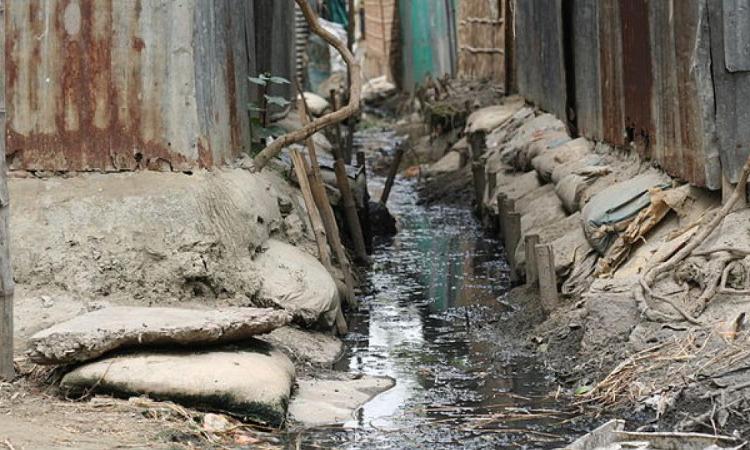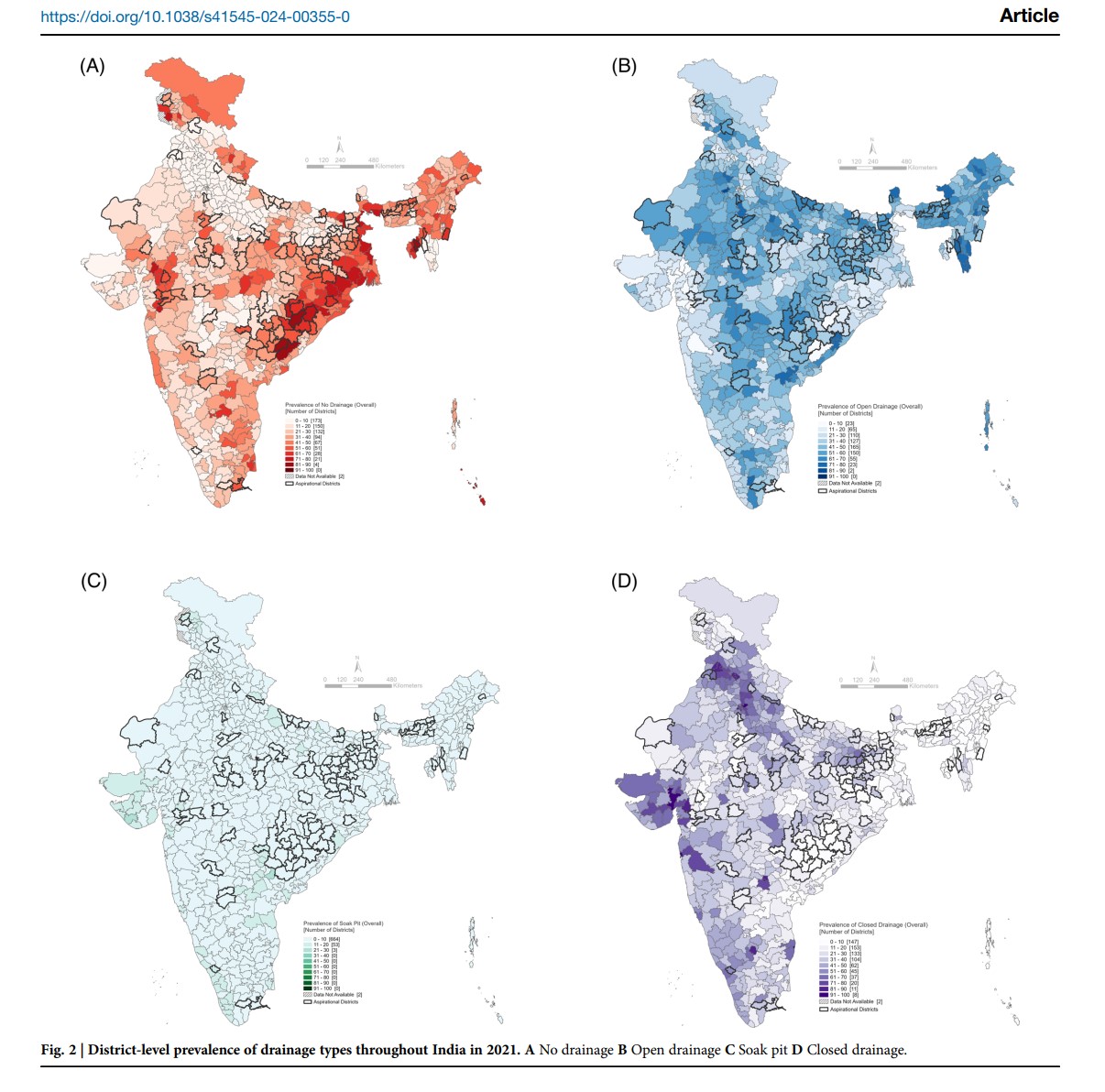
The complete removal of faecal contamination from the household environment is crucial for improving WASH outcomes. India’s Swachh Bharat Abhiyan and the Jal Jeevan Mission have made significant progress with 86 percent of households having a working tap connection and households without a toilet below 18 percent.
Inspite of these impressive gains, what happens to the wastewater generated from the toilets and whether it reaches the treatment facilities to prevent faecal contamination and threats to health continues to be less studied argues this paper titled 'Examining geographic variation in the prevalence of household drainage types across India in 2019-2021' published in npj Clean Water.
For example, only 7.1 percent of individuals in India were using toilets connected to a piped sewer network while 75 percent of individuals had a toilet that either flushed to a septic tank, pit, or used a pit or dry toilet, while 18 percent did not have a toilet, as of 2021. These homes had to rely on manual labour for conveying waste to a treatment facility, a practice outlawed in 2013 as a part of the Prohibition of Employment as Manual Scavengers and their Rehabilitation Act.
Overflowing drains challenge health and environment
Mechanised methods of waste conveyance such as tanker trucks provided by municipalities or operated by private enterprises, can be used, but the supply of tanker trucks has not kept up with the increasing demand for waste conveyance due to the increased household toilet and piped water coverage throughout India.
Thus, septic tanks and soak pits often overflow into open drains, which pose a threat to the health and environment due to contamination of water sources and spread of diseases. Open drains can flood during heavy rains and can lead to a number of waterborne diseases such as cholera and typhoid among children and also lead to acute respiratory illnesses.
Earlier surveys in India show that over 33 percent of households had open drainage, and over 28 percent of households had no drainage while only 26.7 percent of households had access to an underground drainage system.
The fifth round of India’s National Family Health Survey (NFHS5), presents an opportunity to get updated estimates on the prevalence of household drainage. The study explores the type of drainage facilities used across 720 districts in India by household toilet and water access, their geographic distribution and drainage types by household wealth, education, and caste.

The study finds that:
Household prevalence of open drains is above 42 percent for more than half of India's districts
- The most common drainage type is open drains (37.5 percent) followed by closed drains (33.9 percent).
- The household prevalence of open drainage is above 42 percent in more than half of India’s 720 districts. Similarly, the household prevalence of closed drainage is below 24 percent in more than half of India’s 720 districts.
Open drains are more common in rural areas
- Open drains are more common in rural communities, while closed drains were more common in urban communities
- Twenty eight percent of rural communities have no drainage facilities compared to 6.8 percent urban communities. The median district-level prevalence values for open drainage and drains to soak pits is higher in rural communities than in urban communities. However, the median district-level prevalence for closed drainage is 46.1 percent in urban communities as compared to 17.2 percent in rural communities.
- Forty one percent of households with an improved toilet have access to closed drainage while 39 percent of households without an improved toilet rely on open drainage, and 26 percent have no drainage.
- Urban households with improved toilets are more likely to have closed drainage than rural households with improved toilets. However, rural households with improved toilets are more likely to have open drains or no drainage than urban households with improved toilets.
More than half households with piped water have open drains or no drainage facility
- At the all-India level, 40 percent of households with piped water access have closed drains and another 40 percent of those with piped water rely on open drainage while 17 percent of people with piped water have no drainage.
- Urban households with piped water are more likely to have closed drainage than rural households with piped water. However, rural households with piped water are more likely to have either open drains or no drainage than urban households with piped water
The poor are most likely to have open drains or no drains
- Individuals from the lowest socioeconomic groups are most likely to live in homes that relied on no drainage or open drains. Those in the highest socioeconomic groups are most likely to live in homes with closed drains.
Only a third of Indians have access to a closed drain, mitigating their exposure to hazardous waste flows. However, whether the waste conveyed by these closed drains is being treated is unknown. For example, data from the Government of India shows that less than 28 percent of India’s sewage is currently being treated and it is possible that most of it gets discharged untreated, into local water bodies, putting people at the risk of diseases.
The study argues for:
- The need for future research to examine the extent to which drains – of any type – are properly conveying waste streams to sewerage treatment plants or if they are releasing elsewhere.
- Including the availability of adequate drainage systems as an important area in future WASH interventions that aim at removing untreated fecal contamination from the environment.
- The need for policy makers to target the most socioeconomically disadvantaged groups, besides geographic regions that are more likely to have open or no drainage
/articles/open-drains-drain-health